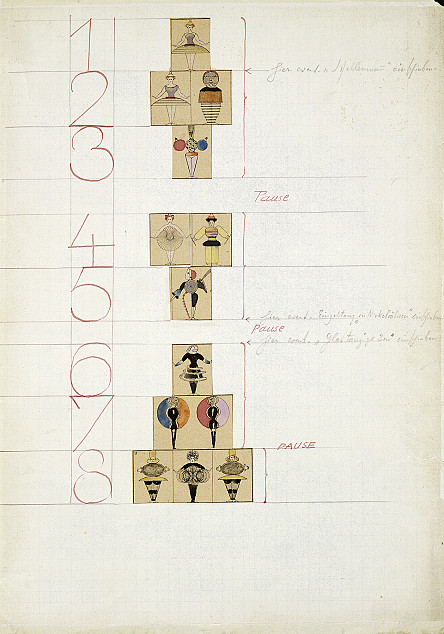
Oskar Schlemmer, Group photo and eight scene photos with instructions, design 1922, realization 1927 Bauhaus-Archiv Berlin
Oskar Schlemmer described his Triadic Ballet as a ‘party in form and colour’. Form, colour and abstraction began to define the way in which the human figure was depicted in the work of painter and sculptor Oskar Schlemmer from an early stage. The Triadic Ballet was his first major theatrical work, already created in Stuttgart in 1922 before his time at the Bauhaus. Here again, he reduced the human figure to basic geometric shapes: abstract costumes made of rigid, movement-inhibiting pieces determined the peculiar quality of the ‘ballet’. Schlemmer regarded the work as a form of ‘artistic metaphysical mathematics’. In three dance sequences, he intensified the drama from humorous and farcical to mystical and heroic qualities, without following any specific plot. Schlemmer’s Ballet thus became an anti-dance, a kind of ‘choreographic constructivism’ – and was extremely successful at its first performance at the Bauhaus in 1923.